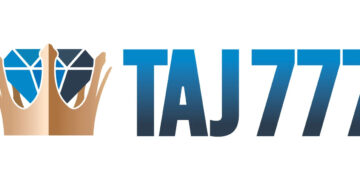The landscape of data governance is undergoing a seismic shift. As organizations worldwide grapple with increasing volumes of user data, regulatory frameworks are evolving to protect consumer rights while fostering innovation. The Data Act represents one of the most significant legislative developments in recent years, fundamentally transforming how companies collect, store, and utilize user information.
For businesses operating in the digital sphere, understanding these changes isn’t optional—it’s essential for survival. Whether you’re managing e-commerce platforms, developing software solutions, or providing digital services, the Data Act will impact your operations in profound ways.
Understanding the Data Act: A New Era of Data Governance
The Data Act, formally adopted by the European Union in 2023 and set to apply from September 2025, establishes comprehensive rules for data access and usage across industries. Unlike its predecessor, the General Data Protection Regulation (GDPR), which primarily focuses on personal data protection, the Data Act casts a wider net—encompassing both personal and non-personal data generated by connected products and services.
This legislation aims to create a fair data economy where users have greater control over their information, and businesses can access valuable datasets while respecting privacy boundaries. The Act introduces several groundbreaking principles:
Data Portability Rights: Users can now request their data from one service provider and transfer it seamlessly to another, breaking down the monopolistic data silos that have dominated the tech industry.
Manufacturer Data Sharing: Companies that produce connected devices must make data accessible to users and third-party service providers, preventing hardware lock-in scenarios.
Business-to-Business Data Sharing: The Act facilitates voluntary data sharing between organizations, creating new opportunities for collaboration and innovation.
Government Data Access: Public sector bodies can access privately held data during emergencies or for statistical purposes, though with strict safeguards in place.
Key Changes Companies Must Prepare For
1. Enhanced Data Access Requirements
Gone are the days when companies could treat user data as proprietary assets. The Data Act mandates that organizations provide users with direct access to data generated through their interactions with products and services. This transparency requirement extends beyond traditional personal information to include:
- IoT device usage patterns
- Smart home automation data
- Connected vehicle telemetry
- Industrial machinery performance metrics
- Wearable health and fitness information
For digital solution providers, this means architecting systems with data portability built in from the ground up. Companies need robust APIs and standardized data formats that enable seamless information transfer. A skilled Senior Shopify Developer, for instance, would need to ensure e-commerce platforms can export customer purchase histories, browsing behaviors, and preference settings in machine-readable formats upon request.
2. Interoperability Standards Become Mandatory
The Data Act doesn’t just require data sharing—it demands that shared data be usable. Organizations must adopt open, standardized data formats that ensure interoperability between different systems and platforms. This represents a significant technical challenge, particularly for companies that have developed proprietary data structures over the years.
Businesses will need to:
- Implement standardized data models across their infrastructure
- Develop comprehensive API documentation
- Create secure data transfer mechanisms that maintain integrity during transmission
- Ensure backward compatibility as standards evolve
The transition period requires substantial investment in technical infrastructure, making this an opportune moment for businesses to modernize their data architectures. Those who embrace these changes early will gain competitive advantages through improved system flexibility and customer trust.
3. Contractual Obligations and Fair Data Agreements
The legislation introduces strict regulations around contractual terms governing data access. Unfair contractual terms—those that limit data access rights or impose unreasonable restrictions—are now prohibited. Companies must ensure their terms of service, data processing agreements, and vendor contracts comply with these new standards.
Specifically, organizations cannot:
- Unilaterally restrict users’ data access rights through contract clauses
- Impose excessive fees for data retrieval or portability
- Require users to waive their data rights as a condition of service
- Create technical barriers that make data access impractical despite legal compliance
Legal and compliance teams must work alongside technical departments to audit existing agreements and redesign data governance frameworks that balance business interests with regulatory requirements.
4. Third-Party Access and Service Provider Rights
One of the most transformative aspects of the Data Act is the requirement for manufacturers and service providers to grant third parties access to data. This provision aims to foster competition, enable innovative aftermarket services, and prevent vendor lock-in.
Consider the implications for IoT ecosystems: A smart thermostat manufacturer must now share device data with independent HVAC service providers, not just their own technicians. Similarly, connected car manufacturers cannot restrict vehicle diagnostic data to their dealer networks.
This democratization of data access creates opportunities for specialized service providers while forcing established players to compete on service quality rather than data exclusivity. However, it also introduces security and liability concerns that companies must address through:
- Robust authentication and authorization frameworks
- Granular access controls that limit third-party data access to what’s necessary
- Comprehensive audit trails documenting who accessed what data and when
- Clear liability frameworks defining responsibility for data breaches
The AI Dimension: Data Act Meets Artificial Intelligence
The intersection of the Data Act with artificial intelligence development creates particularly interesting implications. As AI models require vast datasets for training, the Act’s provisions around data access and sharing could significantly impact how companies develop and deploy AI systems.
The recently proposed AI Data Act builds upon these foundations, establishing specific guidelines for using personal and non-personal data in machine learning applications. Organizations developing AI solutions must navigate:
Training Data Transparency: Companies must disclose what data sources feed their AI models, ensuring users understand how their information contributes to automated decision-making systems.
Algorithm Access Rights: In certain circumstances, users may request information about the logic behind AI-driven decisions that affect them significantly, from credit scoring to employment screening.
Data Minimization in AI: Machine learning systems should collect only data necessary for their specific purpose, challenging the “collect everything, analyze later” approach many tech companies have adopted.
Consent for AI Training: Using personal data to train AI models may require explicit consent, particularly when the AI’s outputs could impact individuals’ rights or interests.
For businesses leveraging AI in their digital solutions, these requirements necessitate careful consideration of data acquisition strategies, model development processes, and deployment architectures. The competitive advantage increasingly lies not in hoarding data, but in effectively utilizing available information while respecting privacy constraints.
Practical Steps for Compliance
Transitioning to Data Act compliance requires coordinated efforts across technical, legal, and operational domains. Here’s a roadmap for organizations preparing for these changes:
Conduct a Comprehensive Data Audit: Map all data collection points, storage locations, and usage purposes across your organization. Identify what data falls under the Act’s scope and which processes need modification.
Invest in Data Infrastructure Modernization: Legacy systems built without portability in mind will struggle under the new requirements. Prioritize investments in cloud-native architectures, API-first designs, and standardized data formats.
Develop Data Sharing Protocols: Create formal procedures governing how data access requests are received, validated, and fulfilled. Establish clear timelines and quality standards for data delivery.
Train Your Teams: Ensure developers, data scientists, customer service representatives, and executives understand their responsibilities under the Data Act. Compliance isn’t solely IT’s responsibility—it requires organization-wide commitment.
Establish Vendor Compliance Programs: If you rely on third-party data processors or software providers, verify their Data Act compliance. Non-compliant vendors create significant liability exposure for your organization.
Implement Privacy-Enhancing Technologies: Explore solutions like differential privacy, federated learning, and homomorphic encryption that enable data utility while minimizing exposure risks.
Create User-Friendly Data Access Interfaces: Compliance isn’t just about technical capability—users need intuitive tools to exercise their rights. Invest in user experience design that makes data portability accessible to non-technical individuals.
Business Opportunities in the New Data Landscape
While compliance challenges dominate initial discussions, the Data Act creates substantial business opportunities for forward-thinking organizations:
Data Marketplace Development: New platforms facilitating compliant data exchange between businesses will emerge, creating value for data providers and consumers alike.
Specialized Compliance Services: Companies offering Data Act compliance consulting, technical implementation, and ongoing monitoring services will find growing demand.
Interoperability Solutions: Organizations that develop standardized connectors, data transformation tools, and integration platforms will serve critical infrastructure roles in the new data economy.
Trust-Based Differentiation: Businesses that exceed minimum compliance requirements and adopt transparency as a core value proposition will attract privacy-conscious consumers and partners.
Data Cooperatives and Trusts: Alternative data governance models that give users collective bargaining power over their information may gain traction, requiring new organizational structures and business models.
Industry-Specific Implications
E-commerce and Retail
Online retailers must prepare to share comprehensive customer data, including purchase histories, browsing patterns, and preference profiles. This democratization could intensify competition as customers more easily compare offerings across platforms. However, retailers who build genuine relationships based on superior service rather than data lock-in will thrive.
Healthcare and Wellness
Connected health devices generate intimate personal data that users increasingly demand to control. Healthcare providers and digital health companies must balance Data Act compliance with stringent medical privacy regulations like HIPAA, creating complex compliance landscapes.
Manufacturing and Industrial IoT
The Act’s provisions around connected product data fundamentally alter manufacturer-customer relationships. Industrial equipment producers can no longer monopolize maintenance and repair services through data exclusivity, potentially disrupting established business models while opening aftermarket opportunities.
Financial Services
Banks and fintech companies already operate under strict data regulations, but the Data Act extends requirements to non-personal financial data, including transaction patterns and market analysis. Open banking initiatives align with these trends, accelerating the financial sector’s digital transformation.
Global Implications and Cross-Border Considerations
While the Data Act is European legislation, its impact extends globally. As with GDPR, companies serving European customers must comply regardless of their headquarters location. Moreover, the Act’s principles are influencing data governance discussions worldwide:
United States: Various state-level privacy laws incorporate data portability provisions, though no comprehensive federal framework exists yet. However, the direction of travel suggests increasing alignment with European approaches.
Asia-Pacific: Countries like Japan, South Korea, and Singapore are developing data governance frameworks that balance innovation with consumer protection, drawing inspiration from European models while adapting to regional contexts.
Latin America: Brazil’s LGPD and similar regional legislation reflect global consensus around data rights, though implementation timelines and enforcement mechanisms vary.
For multinational organizations, creating unified global data governance frameworks that meet the highest common standard simplifies compliance while building customer trust across markets.
The Road Ahead: Adaptation and Innovation
The Data Act represents more than regulatory compliance—it signals a fundamental reimagining of data’s role in the digital economy. Companies viewing it solely as a burden will struggle, while those recognizing it as an opportunity to rebuild customer relationships on the foundations of trust and transparency will flourish.
The transition won’t be easy. Technical challenges, implementation costs, and operational disruptions are inevitable. However, organizations that approach these changes strategically—investing in robust data architectures, fostering cultures of privacy by design, and viewing data access as a competitive differentiator rather than a concession will emerge stronger.
As we move toward full implementation, expect continued evolution in both regulatory requirements and technical solutions. Staying informed, maintaining flexibility, and prioritizing ethical data practices will distinguish leaders from laggards in the new data landscape.
The question isn’t whether the Data Act will change how companies handle user data it’s whether your organization will shape that change or merely react to it. The time to prepare is now, transforming compliance requirements into opportunities for innovation, differentiation, and sustainable competitive advantage in an increasingly data-conscious world.




















